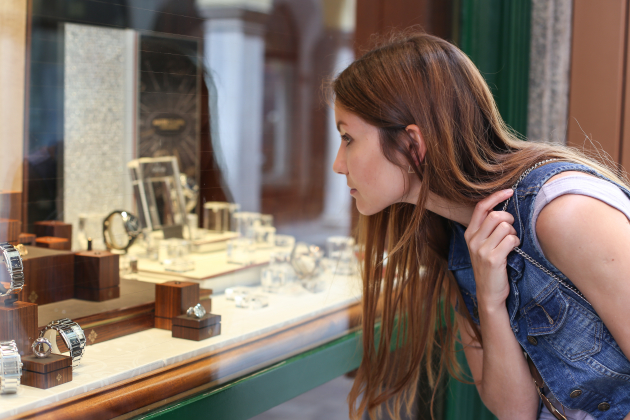There’s a new kind of jewelry buyer out there. It should come as no surprise that customers are not spending as much on their baubles as they used to. And, that may not be the bad news to your bottom line that you may think. Its also not due to anything you or your staff did—or didn’t do. Blame it on the shifting tastes and spending habits of the American consumer, says Edahn Golan, an analyst for the diamond industry and author of the annual US State of the Jewelry Report. We caught up with Golan just as he was crunching the numbers from his latest 2015 survey of US households. He targeted five main trends that are contributing to the spending habits of fine jewelry shoppers today—and how each can translate into more sales opportunities for you.

“My feeling is that the American consumer is finding an excuse to buy jewelry and watches at other times of the year, and not as something you buy only at the holidays,” says Edahn Golan, an analyst for the diamond industry.
1. Consumers are spending more on watches.
The survey found that US consumers are buying watches. But the survey didn’t drill down, asking participants to name brands, so this finding includes all watches at all price points.
Why it’s an opportunity The trend is still significant for high-end jewelers to note.
2. They’re buying jewelry and watches off-season.
This may account for the steady decline in holiday sales Golan has been tracking from 2012 to 2014, which resulted in a 2.5 percent drop over that time span. But that may not be such bad news, and here’s why: “What we’re seeing is that people are shopping for jewelry all year round,” says Golan. My feeling is that the American consumer is finding an excuse to buy jewelry and watches at other times of the year, and not as something you buy only at the holidays. We have found a rise in sales in July year after year and a slight increase in August as well.”
Why it’s an opportunity “It’s never too early to generate sales, says Golan. “ It’s not necessary to wait until November or December to do your heavy marketing; many consumers are open to making their important holiday purchase at an earlier time. They’re buying in October too.”
3. They’re spending less per item and more on lower cost items.
“On one hand we’re seeing expenditures on fine jewelry increasing, but retailers are telling us they’re not selling as many big ticket items as they used to,” Golan says. One possible reason: There’s been a huge cultural change affecting the way people buy and wear jewelry, says Golan. “People are more informal when they dress for work or even for an occasion. You don’t have to be decked out so if your clothing isn’t top shelf, your jewelry doesn’t have to be either,” he says.
Why it’s an opportunity That people are spending more overall on jewelry is great news for retailers. But it may mean a shift in the merchandise you carry. “Stores should stock a range of jewelry,” says Golan. The $10,000 and above items are hurting. So you might want to also offer a selection at lesser price points. Also be sure to stock up on good gift items: “Today many people tend to want to buy something less expensive and more symbolic, which explains the popularity of Pandora,” he says.
4. Thirty five to forty four year-olds spent the most on jewelry.
Golan found that spending on jewelry for this age group was up 10 percent over last year’s report and they are spending a lot more than any other age group. In fact, he notes, 35 to 54 year-olds are spending well above average.
Why it’s an opportunity This is your target market to hit, he says. Traditionally 45 to 55 year-olds spend more on average, possibly, he speculates, because they are at the peak of their earning ability. “You own a house, you’re comfortable, so you’re at a good time of your life and feel more comfortable spending money,” he says.
5. Tastes in wedding jewelry are changing.
Bridal is one of the most important categories for jewelers, so it’s important to keep up with the trends. According to Golan there are two big ones that can affect jewelry sales: 1) Americans are getting married later and less often, and 2) he sees a tendency among younger millennials to forego buying a new engagement ring in favor of using a family keepsake. “Because it has emotion, it has a story, and it’s unique,” says Golan.
Why it’s an opportunity Let’s take the first trend: Older consumers tend to spend more on an engagement; this is especially true for those on their second marriages. As for the second trend, Golan sees this as an opportunity for retailers to be flexible and help clients find something different. “An engagement ring doesn’t have to be a diamond or gold; it doesn’t have to be the same design as everybody else,” he says. A jeweler can offer a unique, custom design whether starting from scratch or working with an existing setting.

